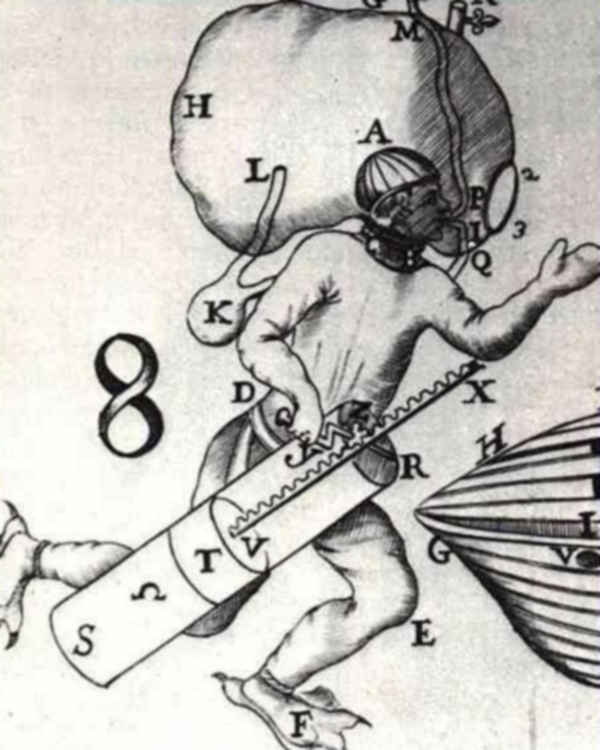 |
| Giovanni Borelli's 17th century drawing shows his ideas for diving gear. |
In the age of sail, salvaging shipwrecked cargo was big business. This was a natural offshoot of the transportation of wealth on a worldwide scale by the Portuguese and Spanish in their treasure fleets and the English, and Dutch in their East Indiamen.
The vast distances these ships traveled meant that an unhealthy percentage of them would not make it to home port, either victims of navigational error, storms, or piracy.
Battle and storm damage as well as the ravages of marine growth prematurely aged even the most stoutly made hulls. As a practical matter, Spanish galleons were required to carry a diver who was used to find leaks when an inspection inside the hull couldn't locate them.
Spanish colonial ports had salvage divers and the necessary equipment to rescue a ship's cargo from shallow depths up to 50 feet. These men were paid two and half times the going rate for an ordinary seaman, reflecting to an extent the hazards of their profession. Additionally they received bonus payments for retrieving treasure and cannon.
The fanciful 1680 illustration of Giovanni Borelli's proposed underwater breathing apparatus to the best of our knowledge was never built. Instead as done centuries before, free divers used stones to quickly descend to the bottom.
These divers spent about three minutes under water before having to take a breath. In the Caribbean, black pearl divers were sought out for their excellent underwater vision. There were reports of Caribbean Native American divers who could dive for up to 15 minutes, but historians have discounted these as embellishments.
The taxing nature of the work meant that a single diver could only make one deep dive a day. Consequently salvagers had to have many divers available. Even then the profession was very deadly with men drowning or suffering from pressure related ailments, some of which were fatal.
Caribbean Native American divers were heavily sought for Spanish salvage operations. To augment these divers, black slaves were pressed into service, with reports of freedom being granted to some for being the first to retrieve treasure from a wreck.
Surface crews assisted the divers, using derricks to raise heavy objects like brass cannons. The surface crews also used grappling hooks and long-handled tongs of the same sort as used by oystermen to retrieve small objects. The divers attached ropes to large objects, such as cannons, and gained entry into the wreck to retrieve cargo there.
For wrecks in deeper waters and where the wrecks were in calm sites, salvagers used metal diving bells, some of which were even equipped with small glass windows to allow for more efficiency. The divers could either use the diving bell's air to extend bottom time or they could work sitting inside the bell. Even so, the air quickly fouled.
I have read of barrels being use to transport air to a diving bell, but I don't know how practical that proved. Also working at a reef on in shallow coastal waters diving bells did not prove to be very practical as they could easily tilt and lose their precious air. As effective as early diving bells could be for salvage work, they worked best only under ideal conditions.
Frequently ships broke up on reefs and the contents of these vessels could be scattered for some distance. This kind of wreck called for divers and surface salvage work. Depending on wave action and currents, debris from a wreck could be covered and uncovered by shifting sand from season to seadon. Salvage operations could go on for years, even decades, depending on the cargo's value and ease of access to the wreck site.
Rather than mounting their own salvage operations, pirates waited for the treasure to be retrieved and then attacked the salvage vessels. Consequently, Spanish salvage operations used a number of heavily armed frigates to ward off poachers and attackers.
In Black Flag, Black Ship, a certain pirate crew employs divers for a very mysterious purpose. Read Black Flag, Black Ship to find out!














No comments:
Post a Comment